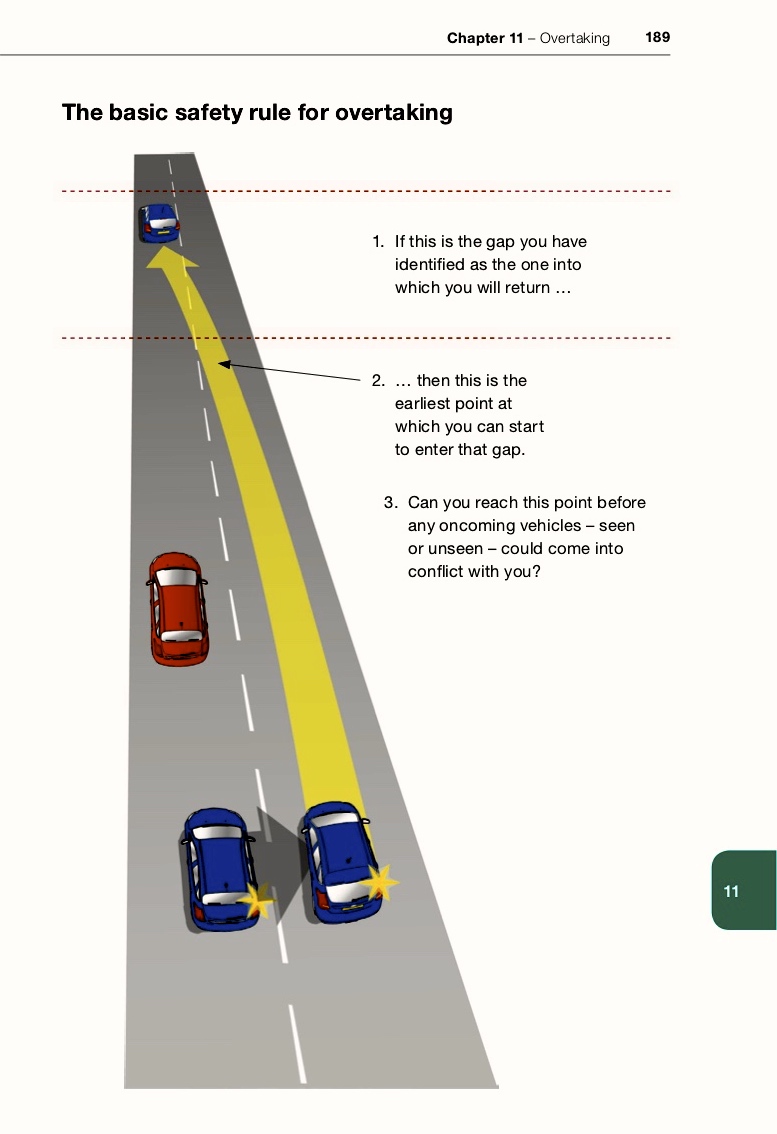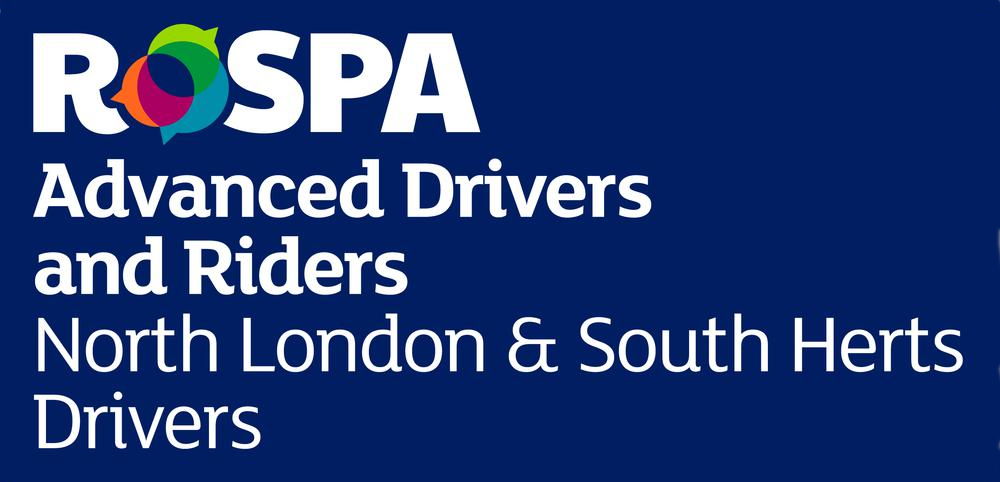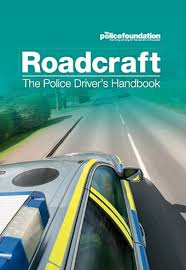Overtaking Chapter 11 Pages 185 - 210
Overtaking is hazardous because it may bring you into the path of other vehicles. It is a complex manoeuvre in which you need to consider the primary hazard of the vehicle(s) you want to overtake, as well as a number of secondary hazards as the primary hazard moves amongst them. It requires you to negotiate dynamic hazards (moving vehicles) as well as fixed ones (road layout)
The hazards of overtaking:
-
Around 1 in 20 of all car occupants killed in a crash are killed when the car is overtaking
-
Many overtaking deaths are due to head on collisions on rural roads
-
The risk of death in a head on collision at 60mph is 90%

Key safety points - Whenever you consider overtaking always ask yourself:
-
Do I need to?
-
Is it necessary or appropriate in the circumstance
-
Is my vehicle capable of overtaking?
-
Don't overtake if you can't see far enough ahead to be sure it's safe
-
Avoid causing other vehicles to alter position or speed
-
Before starting to overtake, always ensure you can move back to the nearside in plenty of time
-
Always be ready to abandon overtaking if a new hazard comes into view
-
Don't overtake in situations where you might come into conflict with another road user or where the overtake would be illegal
-
When possible, avoid overtaking three abreast to leave yourself a margin of safety (Multi-lane roads)
-
Never overtake on the nearside on a multi-lane carriageways except in slow moving queues of traffic where offside traffic is moving more slowly
-
Never use the hard shoulder for overtaking
‘Diagrams and text from Roadcraft – The Police Rider’s Handbook, published 2013 by The Stationery Office (TSO) © Police Foundation copyright 2013. Reproduced with permission from the Police Foundation.’

